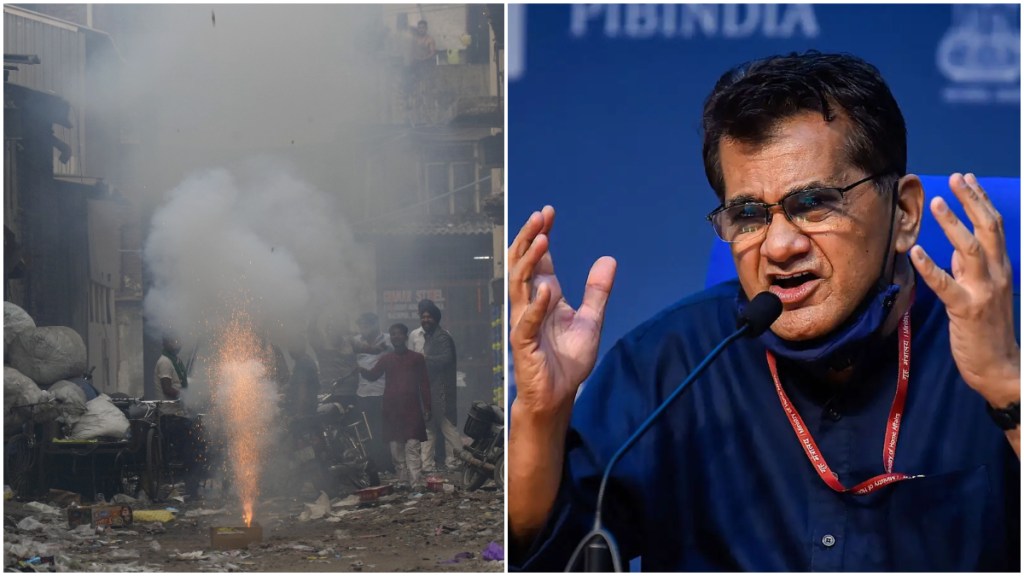Former NITI Aayog CEO Amitabh Kant expressed dismay over the Supreme Court‘s recent ruling “prioritising” the right to burn crackers over the right to “live and breathe”, amid a severe air quality crisis in the city, since ahead of Diwali. “Delhi’s air quality lies in shambles: 36/38 monitoring stations have hit the ‘red zone,’ AQI is above 400 in key areas,” Kant said, highlighting the alarming situation.
‘If LA and Beijing can, why can’t Delhi?’ asks Kant
Kant stressed that Delhi remains among the world’s most polluted capitals, and pointed out that cities like Los Angeles, Beijing, and London have successfully tackled similar issues. “If Los Angeles, Beijing, and London can do it, why can’t Delhi?” he questioned.
Stressing the need for immediate action, Kant advocated for a unified plan to tackle the crisis. “Only ruthless and sustained execution can save Delhi from this health and environmental catastrophe,” he said.
Kant also outlined a few measures that can be taken to improve the national capital’s air quality. These include:
- Ending crop and biomass burning
- Shutting or modernising thermal power plants and brick kilns with cleaner technology
- Shifting all transport to electric by 2030
- Enforcing strict construction dust control
- Ensuring full waste segregation and processing
- Redesigning Delhi around green, walkable, transit-focused living
Kant said that only with such “decisive & relentless execution” Delhi get back to having breathable air.
Delhi chokes as AQI spikes post Diwali
Delhi residents woke up on Tuesday to thick grey smog that led to reduced visibility, as the city’s air quality dropped sharply after widespread firecracker bursting on Diwali night, despite the Supreme Court’s two-hour limit.
According to data from the Central Pollution Control Board (CPCB), Delhi’s Air Quality Index (AQI) was 359 at 11 a.m., falling in the ‘very poor’ category. The AQI had already been high since early morning — 346 at 5 am, 347 at 6 am, 351 at 7 am, and 352 at 8 am.
An AQI between 0-50 is considered ‘good’, 51-100 ‘satisfactory’, 101-200 ‘moderate’, 201-300 ‘poor’, 301-400 ‘very poor’, and 401-500 ‘severe’.
Out of 38 air monitoring stations across the city, 35 recorded pollution levels in the ‘red zone’, showing ‘very poor’ to ‘severe’ air quality. As per the CPCB’s SAMEER app, 31 stations fell under the ‘very poor’ category, while four reported ‘severe’ levels of pollution.

